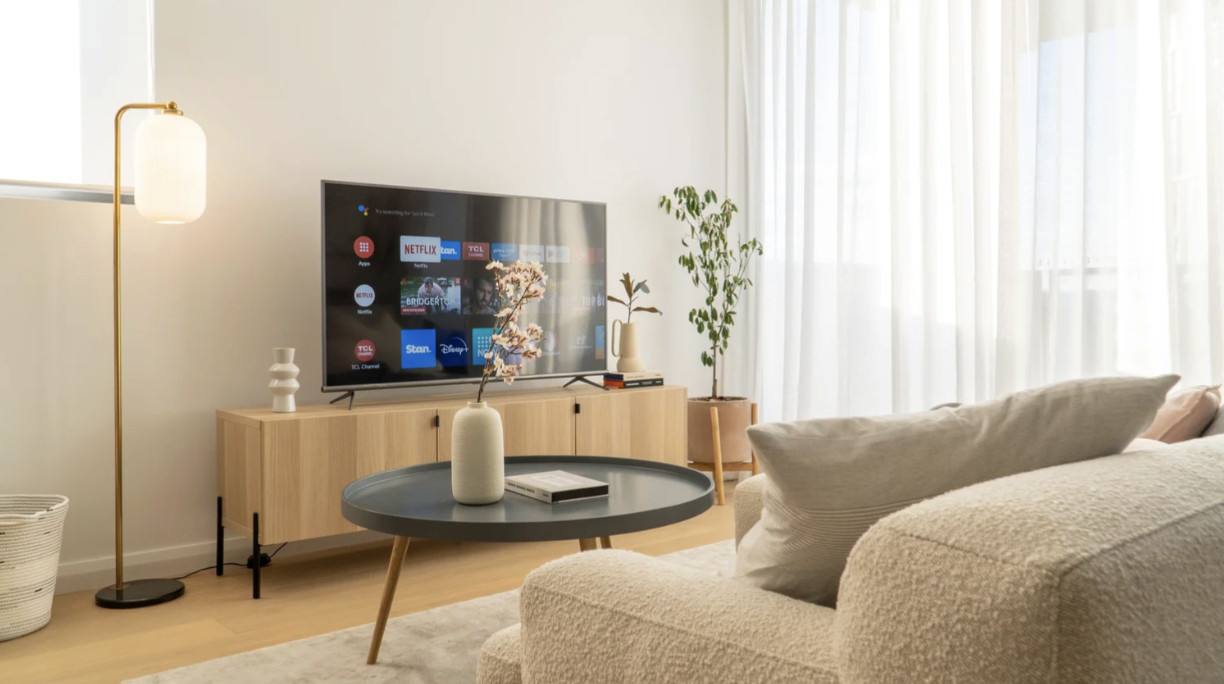Why your home feels like someone else's Pinterest board
You saw it on Instagram. It looked incredible. So you bought it.
But once it arrived? It just felt off.
Maybe it clashed with your rug. Maybe it made the room feel like it belonged to someone else entirely.
Or maybe it joined the ever-growing graveyard of “cool” pieces that never quite worked together.
Why Trend Hopping Destroys Cohesion
We’ve all been tempted by The Trend™ (yes, me included).
That wavy mirror. The checkered everything. Bouclé chairs, neon signs, terrazzo tiles, whatever Pantone declared the colour of the year.
None of these things is bad.
In fact, a few can be quite beautiful.
But here’s where it all goes wrong:
When your home becomes a scrapbook of passing trends, it’ll start to feel incoherent.
It’s not just a style problem. It’s a feeling problem.
When your home lacks cohesion, it quietly chips away at your sense of ease.
You don’t fully relax. You keep tweaking things. Adding. Second-guessing.
Because your home isn’t reflecting you. It’s echoing everyone else.
Here’s the thing, though…
Trends themselves aren’t the enemy.
They can be inspiring. They introduce you to new materials, palettes, and ideas you wouldn’t have discovered on your own.
The issue is when trends lead and intention follows.
Think of trends the way a chef uses seasoning. Sparingly. Thoughtfully. Supporting the main dish, not overpowering it.
Because a trend will only look good if it works in your space, with your story, your needs, and your existing elements.
Aimee Mazzenga (left) & ABI Interiors (right)
The patterned drenched bedroom and checkerboard bathroom tile may be super on trend right now, but it’ll be super difficult (and expensive) to replace these more permanent features in a few years.
Nothing wrong with it, but thick twice before committing to ‘trendy’ permanent finishes.
How To Decorate With Intention
Here’s how to avoid the impulse-buy trend trap:
1. Start with how you want the space to feel.
Earthy and grounded? Sleek? Calm? Energising?
Design is emotional first, visual second. Name your intention before you shop.
Eric Tate (left) & Vivian Johnson (right)
2. Pick a base palette you won’t get sick of.
Neutrals are your friends here, and this doesn’t mean boring. They’re versatile.
You can layer in personality with textiles, art, and accessories.
It’s much harder (and pricier) to change that trendy colored couch you’ll regret in six months.
3. Define your “timeless trio.”
These are three design elements you personally never tire of.
Maybe it’s deep jewel tones, marble, and curved silhouettes. Maybe it’s warm wood, brass hardware, and linen.
Whatever they are, write them down. Refer back before every purchase.
For the owner of this apartment, their timeless trio is Parisian-inspired antiques, gold accents, and plush textures.
4. Add one or two trend-inspired pieces, maximum.
Before you buy, ask yourself:
Does this work with my existing palette?
Can it age gracefully or be easily replaced?
Am I buying it because I love it or because I saw it 15 times on TikTok?
5. Review everything in context.
Before you click buy, zoom out.
Look at your room as a whole. Will this new item complement what’s already there or compete with it?
The goal isn’t to avoid trends altogether.
It’s to build a home that still feels like you in five years, even if you change your throw pillows.
So here’s what I want you to do right now:
List your top 3 timeless design elements.
Think of them as your personal design compass.
Whenever you’re unsure about a piece, go back to the list.
Mine?
Muted natural tones (Olive, deep greens, browns, camel)
Aged brass
Medium-toned timber (oak, walnut, mango wood, teak)
Because the most beautiful homes aren’t the most trendy ones.
They’re the ones that feel intentional. Cohesive. Like the person who lives there actually chose each piece for a reason.
That’s what creates the kind of home you never want to leave.
Cheers,
Reynard





